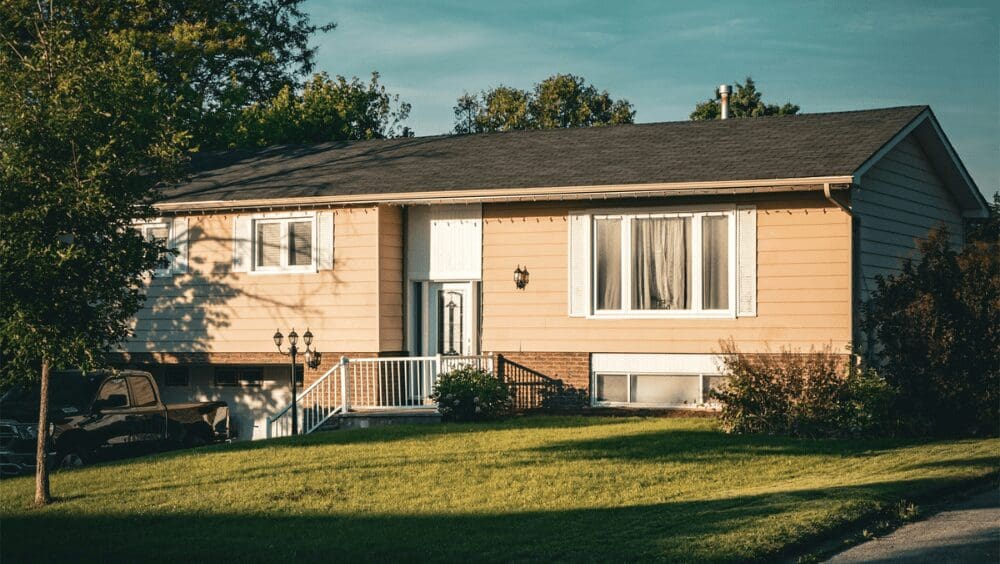Editor’s note: On March 15, 2024, the National Association of Realtors (NAR) announced a landmark lawsuit settlement that will change the way real estate agent commissions are handled in the future. These changes will “decouple” seller and buyer agent compensation. Industry experts predict that this decoupling will likely lower agent fees and give buyers the ability to negotiate commission amounts directly. Learn more.
If you’re selling your home, a 2% real estate commission may seem enticing in comparison to the average 3% to 6% rate. But you may be wondering if you can expect the same value from a low-commission real estate agent that you’d receive from a full-commission agent.
In this article, we explore the reasons why some agents might offer a discounted rate and what kind of service you can expect from a low-commission agent or discount brokerage. To help you make an informed decision in your search, we spoke with top-performing real estate agents for expert insights.
Find an Agent 100% Worth Their Fees
We’ll connect you with three top local agents proven to deliver amazing results for their clients. Our data shows that the top 5% of real estate agents across the U.S. sell homes for as much as 10% more than the average real estate agent.
How does a 2% real estate commission work?
Low-commission agents, 2% commission companies, or discount brokerages charge a reduced 2% commission to home sellers. While this may look like a 1% to 4% discounted commission fee of the average 3% to 6% commission on a real estate transaction, it’s actually a 1% discount or less, because it typically only applies to the listing agent’s commission.
Still, that one percent can add up to thousands of dollars in savings, depending on the price of your home. However, paying a reduced commission may impact the total profit you make on your home sale, leaving you with less money at the end of the day.
What is the average real estate commission rate?
According to HomeLight’s real estate transaction data compiled from thousands of home sales each year, the national average real estate agent commission rate is currently 5.8%. Locally, commission rates can vary. Here’s a round-up of commission rates across a few major U.S. cities:
- Los Angeles real estate commissions: 4.58%
- San Francisco real estate commissions: 5.46%
- New York City real estate commissions: 5.50%
- Bakersfield, California real estate commissions: 5.12%
- San Diego, California commissions: 4.82%
- Atlanta, Georgia commissions: 5.72%
- Washington, DC commissions: 5.30%
- Fort Lauderdale, Florida commissions: 6.60%
The data shows that in a typical real estate transaction, the seller usually pays somewhere between 5% and 6% in commission. This is if the seller is on the hook for both the listing agent and the buyer’s agent commissions, which was more typically the arrangement before the implementation of the NAR lawsuit settlement terms. If the seller is only paying for the listing agent’s commission, the commission would be somewhere around 3% of the transaction, while the buyer’s agent can negotiate directly with the buyer for their commission rate.
The listing agent also doesn’t pocket their share of the fee. Both the buyer’s agent and the listing agent will pay a portion of their commission to their companies for brokerage and desk fees.
How much can I save with a 2% real estate commission?
In a 2% real estate commission scenario, the 2% commission fee only applies to the listing agent’s commission. It’s important for a seller to understand that the commission paid to the buyer’s agent doesn’t disappear. If you offer to pay for the buyer’s agent commission to make your listing more enticing, the rate is still around 2% to 3% in commission.
For example, if the average commission in your area is 5.8%, you may pay 2.9% (50% of 5.8%) to the buyer’s agent on top of the discounted 2% fee paid to the listing agent, for a total of 4.9% commission. When you account for the buyer’s agent costs, the savings gap you’d earn with a 2% versus a 6% commission agent narrows considerably.
In the chart below, we show you the total commissions you’ll pay with a discounted 2% listing fee and a 2.5% buyer’s fee. The actual amount you’ll pay a buyer’s agent depends on what’s typical for your area and the rate you agree to pay.
| Sale Price | 2% Commission for listing agent | 2.5% commission for buyer’s agent* | Total commission paid (4.5%) | Standard 6% Commission | Potential commission savings |
| $175,000 | $3,500 | $4,375 | $7,875 | $10,500 | $2,625 |
| $225,000 | $4,500 | $5,625 | $10,125 | $13,500 | $3,375 |
| $300,000 | $6,000 | $7,500 | $13,500 | $18,000 | $4,500 |
| $400,000 | $8,000 | $10,000 | $18,000 | $24,000 | $6,000 |
| $525,000 | $10,500 | $13,125 | $23,625 | $31,500 | $7,875 |
| $700,000 | $14,000 | $17,500 | $31,500 | $42,000 | $10,500 |
| $1,000,000 | $20,000 | $25,000 | $45,000 | $60,000 | $15,000 |
*Commission rates are estimates and are not a guarantee for your home sale.
Can you pay a 2% commission to the buyer’s agent as well?
With the help of your listing agent, you can negotiate off-MLS to pay a reduced commission to the buyer’s agent. However, be prepared for buying agents to negotiate for a full commission.
Buyer’s agents are “not going to prioritize” a discounted commission “over a 3% listing,” explains Megan Hill, who has 68% more single-family home transactions under her belt than the average agent in Montgomery, Alabama. “They’re going to go where they can make their money.”
Why would an agent offer a 2% commission?
A top-producing agent likely will not devalue their services to offer a 2% commission. Successful agents know their worth and respect their clients enough to give them the full level of service they expect — and that’s not possible when cutting huge corners with commissions.
However, there are certain situations in which an agent might work for a lower commission, such as:
The agent doesn’t need to put in as much work
If you’re selling your home during a hot market when homes sell fast, the agent may not have to invest as much time or effort in completing the sale. The same is true if you have an in-demand home. If your home is in a desirable location, has an attractive listing price for a select buyer pool, or has a high level of coveted upgrades, an agent may consider it an easy-to-sell prize.
An agent may also consider a reduced commission if you have the time, experience, and willingness to take on a portion of the work. There’s a lot involved in the selling of a house, but if you’re a professional photographer, videographer, interior decorator, or digital marketer, and you’re a go-getter who wants to be more involved in the sale, an agent might cut you a deal.
The agent doesn’t intend to put in as much work
Jose Valiente, who sells homes 51% faster than the average Hialeah, Florida, agent, elaborates that an agent offering a 2% commission either doesn’t fully understand how much work must go into selling a house or simply doesn’t intend to put in that level of work. However, by contrast, a top performer will have sold enough houses to know what their time is worth and can afford to turn down a client who won’t accept the standard rate.
The agent needs experience
An agent’s main motivation in offering a reduced commission rate is often to attract more clients and encourage them to sign a listing contract. A brand-new agent or part-timer may not be able to “win” the listing based on a history of successful sales or a bevy of great client reviews. Instead, they may lower their rate to make the risk of underperforming worthwhile to their client.
We recommend that sellers know how many transactions are average for their area and how many transactions their agent has under their belt. How many transactions a top producer closes depends on what’s typical of their local market and the brokerage that they work for. It could be 40-50 sell-side transactions in some areas, or it could be over 100 in a busy local market.
“I checked out one brokerage offering 2% commission, and they have 25 buy-side and 25 sell-side transactions for the year with about 10 agents,” explains Hill. That’s a low number for Hill’s Montgomery, Alabama, area.
Fewer homes are being listed
Similar to other sales industries, there are times when supply is low. The 2% commission can give an agent an edge in a competitive market where inventory is low, and other agents are clamoring for limited listings. Fall and winter are traditionally slower when it comes to the number of properties being placed on the market. During this offseason, or during a hot market when there’s an inventory shortage, agents may be competing for seller clients and be more willing to accept a lower commission.
Your home has a high listing price
If you’re selling a luxury home, a home in an area where the average market value is high, or a home with lots of upgrades, the agent stands to make a good commission even at 2%. In fact, an experienced agent may offer a discounted rate to sell a luxury home, so it’s a good idea to check your local brokerages before you look into a discount brokerage.
What services will you get with a 2% rate?
If the 2% real estate commission sounds too good to be true, it might be — depending on what you need and expect from your agent. Don’t assume that you’d get the same level of service as a seller who’s paying the full commission rate. Talk with the agent to find out what services he or she provides for the reduced rate and request a written breakdown so you can see what’s included line by line.
For example, the house selling down the street at a 6% commission rate might have the advantage of a 3D video tour, professional staging, dozens of professionally shot photos, social media promotions, and frequent communications from the agent. As a result, it could end up selling for a higher amount that could exceed what you would have saved with the discounted commission.
If you’re just looking for an MLS (multiple listing service) listing and bare-bones representation, and you have the experience to provide the bulk of the marketing and promos yourself, a 2% agent might be acceptable for you. But if you prefer the full-spectrum service you’d get with the standard commission rate, think twice about cutting corners.
Keep in mind that you can interview multiple real estate agents before you hire one. One idea is to compare the services of your 2% commission rate agent against the services of a top local agent apples-to-apples to see if the trade-offs would be worth it to you.
What are the risks of using a 2% commission agent?
Quality, cost, and speed are the top criteria people consider as they make their spending decisions. The general rule is you can’t have all three. Although there are exceptions, typically you sacrifice one for the other. When you opt for cheap or fast, you don’t always get quality. So, if you prioritize a lower commission fee in your agent search, quality and speed could be affected.
Here are the top risks to consider when working with a 2% commission agent:
You lose in negotiations
Mario Avalos, a HomeLight Elite Agent with 15 years of experience selling homes in Miami, Florida, sees a sprinkling of 2% commission agents in his market. In his experience, any agent charging 2% will likely lack the same level of knowledge for how to negotiate when selling a house that full-priced agents have.
“If an agent values themselves that low, they probably don’t have the confidence or expertise to negotiate effectively with buyers,” he says. “The buyer will likely end up bringing down the price, which could offset the savings from the lower commission.”
You don’t receive dedicated service
An agent who offers discounted rates across the board may need to take on a larger number of clients to make up the difference. If that’s the case, they might have to allocate less time and attention to each client. This may mean that they could be slower to respond to your communications and offer less guidance than you expect.
If you want an agent who is laser-focused on selling your house, can offer personalized service and quick responses, and can afford to invest in the “bells and whistles” when marketing your home, you may be disappointed by what you’ll get in exchange for the 2% commission.
When you pay an agent the full commission rate, you can typically expect dedicated services. A dedicated agent will thoroughly research the comparative market analysis (CMA) they use to help you price your home. They’ll walk you through the sale, provide recommendations that will smooth the process, advise you on the pros and cons of each offer you receive and each step you take, and provide expert advice through any rough spots of your transaction.
“I do my CMAs by hand, and it takes me three days before I get a price back to the seller,” says Hill. “I don’t just pull tax records, slap a price on it, and move on. I’m going to do my calculation and compare it against what the computer says, then I’ll go back and pull costs from the neighborhood specifically. I’m evaluating the lot — the acreage, the upgrades, and the updates.”
A real estate agent fully dedicated to your needs will pull out all the stops to ensure you have a satisfying sale. You may even be able to ask them to take complete charge for a stress-free experience.
You undersell your home
According to HomeLight’s home sales database, the top 5% of agents sell homes for up to 10% more than the average real estate agent. A top performer is going to be in tune with what local buyers seek and how to make your home irresistible to them. They’ll also bring hyper-local expertise to more effectively market nearby walking trails, coffee shops, or neighborhood amenities. When buyers ask about crime and school districts, a top agent will point them to the right resources to get the information they need.
But a 2% commission agent is still cheaper, right? Well, let’s say hypothetically, you do decide to partner with a top agent versus an average one. The top agent helps you maximize the value of your home with spot-on pricing, strategic prep, and a strong marketing strategy that helps you generate tons of interest. Suddenly, the house you would have sold for $300,000 goes for $330,000 — the 10% bump credited to the special expertise of the agent.
In this scenario, the agent’s added value (the additional $30,000) would exceed the cost of the standard 6% commission, amounting to $19,800 on a $330,000 sale. While it’s not guaranteed an agent will add a certain amount of value to your list price, our data shows that top agents consistently earn their seller clients more than their peers, helping to offset and even exceed their commission fees.
How does a 2% commission compare to a 0% commission (flat-fee service)?
You could ditch the listing commission altogether and pay a flat fee for placement on the MLS. These services offer different pricing structures starting at around $99 for an MLS listing, a few photos, and some other basic services. The seller can often pay an additional fee to include extra photos and get a more prominent placement.
The biggest caveat here is that you won’t have a dedicated, personalized resource to help sell your home. This option is typically a resource that benefits for-sale-by-owner (FSBO) sellers. Once your home is listed, you’ll be responsible for all of the services that an agent would usually handle:
- Prepping and staging your home for sale
- Setting an appropriate price
- Marketing your home to the right buyers
- Responding to all buyers’ inquiries and scheduling all showings
- Negotiating with buyers and buyers’ agents
- Handling all paperwork, disclosures, and contracts
If you’re juggling a job, family, and other obligations, or if you just aren’t knowledgeable about the home-selling process, using a flat fee listing service might require more time, knowledge, and energy than you’re able to commit. In addition, data from NAR indicates that FSBO homes typically sell for much less than homes sold by real estate agents, so it could be a wash as to whether you’d actually save money by taking on all the work solo.
What about agents whose rates are under 2%?
While there are discount brokerages and low-commission agents that are willing to dip below the 2% mark, the risk of sub-par service increases as the commission drops. Most agents won’t be able to devote the same time and resources to a deal that is barely earning them a living wage, and some may cut certain services with their rate.
For example, a discount brokerage that offers a 1.5% commission may consider products and services that are standard with a full-commission agent as optional add-ons for which you’ll pay an upcharge. This may include a yard sign, a lockbox, photo or video services, staging, etc. While they may list your home in the MLS, post your listing across their own real estate channels, and oversee the documentation, they may not provide in-person representation or devote any time or money to drive buyers to your listing.
Are there other ways for sellers to save money in the transaction?
The good news is that a homeowner can still save money in the sale of their home with a full-commission agent. Some of the ways our experts recommend sellers cut costs include:
- Selling a home that’s in poor condition as-is to eliminate the cost of repairs.
- Negotiating for the buyer to pay a portion of the closing costs, which could include commissions.
- Capping repairs at what is required by the lender.
“I tell my sellers to make the lender-required health and safety repairs and then offer a home warranty because it’s cheaper,” says Hill.
To Calculate Your Commission Fees, Start With a Home Value Estimate
Tell us a little bit about your property and we’ll provide you with a quick home value estimate. Then you can calculate your estimated real estate agent commission fees as a percentage of property value.
A top agent may save you money in the long run
While a 2% commission rate may seem appealing at first, the bottom line is that you may lose value — and money — in a cut-rate deal. Based on these insights from our experts and transactional data, hiring a full-commission, top-performing agent may give you the best chance at a highly successful outcome. In addition, having a proven, experienced real estate professional in your corner means you can expect to receive dedicated service and guidance throughout your transaction.
If you’re looking for a top agent who will guide you along the way and help you get the best price on your home sale, HomeLight can connect you to an agent with a track record of satisfied clients. Our service is completely free, and in two minutes, we’ll recommend the best agents near you.
FAQs on the 2% real estate commission
A two percent real estate commission refers to a commission rate that some agents offer as a reduced commission structure. However, it’s important to consider what services are included in this reduced commission rate and whether it provides the full range of support and expertise that a full-service agent offers.
Using a full-service agent provides numerous advantages. Full-service agents offer comprehensive marketing strategies, extensive market knowledge, professional negotiation skills, and guidance throughout the entire home selling process. Their expertise can help you maximize your home’s value, navigate complex transactions, and ensure a smoother and more successful sale.
While a 2% commission may initially seem appealing, it’s important to consider any potential hidden costs or trade-offs. Agents offering reduced commissions may provide limited services, compromising marketing efforts, or cutting corners in other areas. This could result in a lower selling price or challenges in finding qualified buyers, ultimately impacting your overall net proceeds.
Full-service agents justify their commission through their expertise, experience, and the value they bring to the table. They invest time, resources, and effort into marketing your property effectively, attracting qualified buyers, negotiating the best terms, and navigating potential obstacles. Their dedication and comprehensive service often result in a higher sale price and smoother transaction, outweighing the commission paid.
Paying a higher commission for a full-service agent is often worth it. Their expertise and support can lead to a higher selling price, shorter time on the market, and a more streamlined process. The additional services they provide, such as marketing, staging advice, and negotiations, are aimed at maximizing your financial outcome and minimizing potential risks, making the investment in a full-service agent worthwhile.
Header Image Source: (ASR Design Studio / Unsplash)



















 English (US) ·
English (US) ·